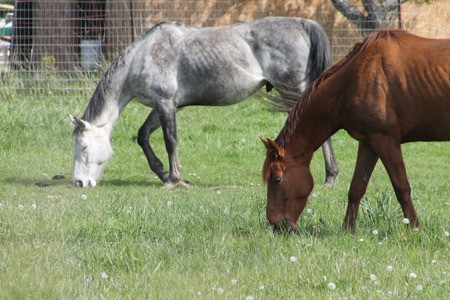By Bruce Gregory, San Juan Islands Conservation District
Special to the Journal
Mud is a problem when it covers areas where livestock access food, water, and shelter. Muddy or waterlogged pastures can create health problems for your livestock, be a source of polluted runoff, and contribute to problems with weeds and poor grass growth.
If you have muddy pastures, don’t despair, there are best management practices and free technical assistance available.
Pastures are Ecosystems
A thick pasture of green plants covering the soil for the whole year promotes the nutrient cycle and increases water quality and healthier pastures for livestock. Pastures are living ecosystems that cycle nutrients via soil organisms, plants and livestock.
Soil bacteria, protozoa, nematodes and literally thousands of other small microscopic organisms work alongside earthworms processing decayed material and creating organic matter and humus.
Plants are also an integral part of this ecosystem. Legumes, like clover, are harvesting atmospheric nitrogen while grasses and forbs are developing deep robust root systems that can reach as deep as four feet into the soil.
This network holds the soil in place and contributes to the ability of the soil to absorb water. Encouraging infiltration of water into the soil profile for treatment by the micro organisms results in a “natural” cleansing process for waters that may be contaminated with manure, fertilizers, or other pollutants.
Water is essential for all forms of life, including plants, micro organisms, livestock, and people. Water is also the key to nutrient cycling because most plant nutrients are soluble and move with water. Downward leaching of plant nutrients occurs with water movement. Soil itself moves in water, taking with it insoluble nutrients such as phosphorus.
Management practices determine how effective the water cycle will be in pastures. If rainwater can enter the soil easily, runoff losses are less. Maximum infiltration of rainfall keeps groundwater tables charged up, wells running year round, and drought damage to a minimum.
Soil surface conditions that foster high rainwater intake have abundant ground cover (by living plants and surface litter) and good soil composition and structure. The best soils for pastures are those that are in well-managed perennial grass. Although soil health can be maintained under crops, the perennial activity of grass provides both structure-forming processes and stabilizing humus.
A grass sod extends a mass of fine roots throughout the topsoil. The grass sod also provides protection from raindrop impact.
For grazing purposes a minimal 4-inch height is key to the pasture plants ability to harvest solar energy, regenerate quickly, and to protect soil from erosion. A moderate amount of thatch continually provides food for soil microorganisms and earthworms that generate the glue-like substances that bind aggregates into water-stable units.
The plants, dead and living, shade the soil and maintain a higher humidity at the soil surface, which enhances growth and nutrient cycling.
Conditions that are detrimental and reduce water intake and percolation are bare ground, surface crusting, compaction, mud, and soil erosion. These conditions are not usually present in well-managed perennial pastures.
Bare ground leads to erosion, crusting, and weeds. Crusting seals the soil surface when the soil aggregates break down. Excessive trampling by livestock or heavy machinery, or over-grazing of livestock, also contribute to degraded water quality.
If you have any of these conditions on your farm, give us a call. We are here to help. Technical assistance is available from the Surface and Stormwater Assistance Program (SSWAP) at no cost. The San Juan Islands Conservation District provides free farm planning and Washington State University Extension provides educational resources.
You can contact a member of the SSWAP team at:
San Juan Islands Conservation District – 378-6621 or visit
www.sanjuanislandscd.org
Washington State University Extension 378-4414 or visit http://sanjuan.wsu.edu/
Next month look for Part 5 of our series about Stormwater Monitoring and what we have learned about our watersheds.



